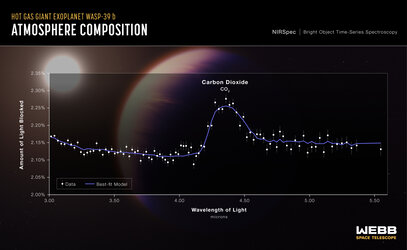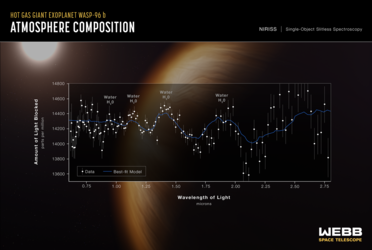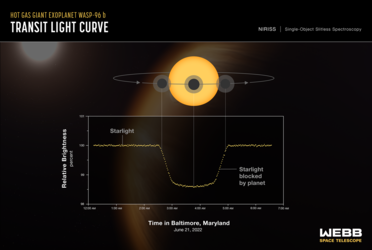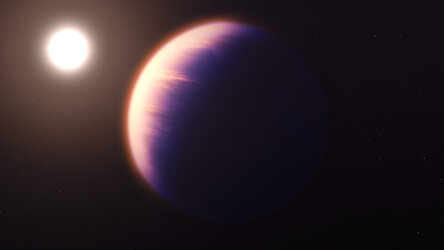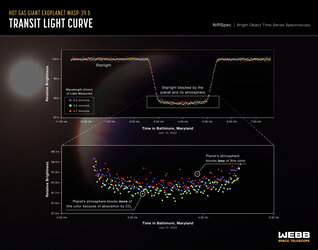

Webb spots quartz crystals in clouds of exoplanet WASP-17b
This is a transmission spectrum of the hot gas giant exoplanet WASP-17 b captured by the NASA/ESA/CSA James Webb Space Telescope's innovative Mid-Infrared Instrument (MIRI) on 12–13 March 2023. It reveals the first evidence for quartz (crystalline silica, SiO2) in the clouds of an exoplanet.
This marks the first time that SiO2 has been identified in an exoplanet, and the first time any specific cloud species has been identified in a transiting exoplanet.
The spectrum was made by measuring the change in brightness of 28 wavelength bands of mid-infrared light as the planet transited the star. Webb observed the WASP-17 system using MIRI’s low-resolution spectrograph for nearly 10 hours, collecting more than 1275 measurements before, during, and after the transit.
For each wavelength, the amount of light blocked by the planet’s atmosphere (white circles) was calculated by subtracting the amount that made it through the atmosphere from the amount originally emitted by the star.
The solid purple line is a best-fit model to the Webb (MIRI), Hubble, and Spitzer data (the Hubble and Spitzer data cover wavelengths from 0.34 to 4.5 microns and are not shown on the graph). The spectrum shows a clear feature around 8.6 microns, which astronomers think is caused by silica particles absorbing some of the starlight passing through the atmosphere.
The dashed yellow line shows what that part of the transmission spectrum would look like if the clouds in WASP-17 b’s atmosphere did not contain SiO2.

